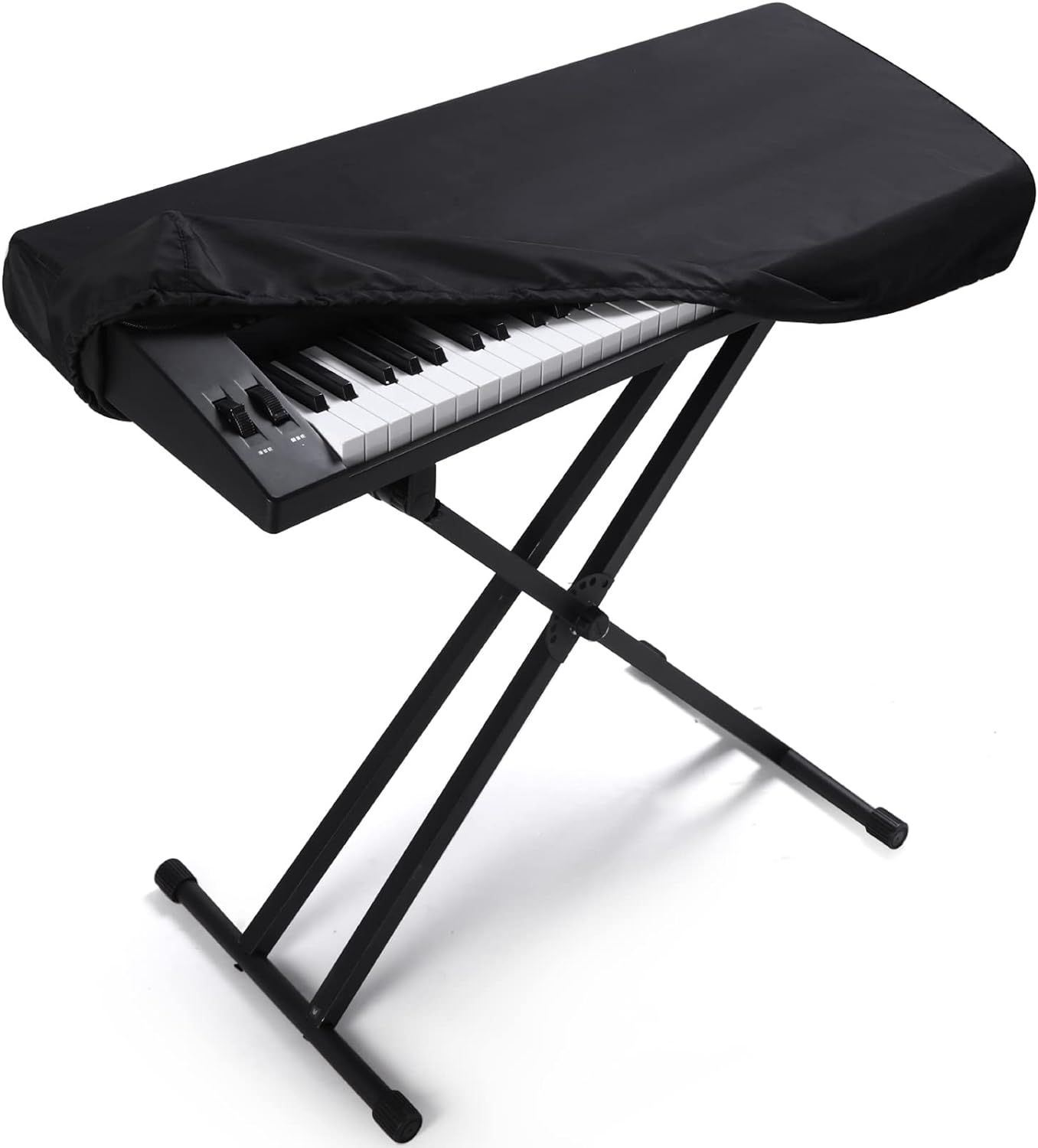Playing the piano is a rewarding and enjoyable experience, but did you know that there are piano keyboard accessories that can enhance your playing even further? As a pianist, you know that the quality of your instrument can make or break your performance. From pedals to stands, there are several items you can add to your setup to improve your performance and make practicing more comfortable.
Whether you’re a beginner or a seasoned pro, these must-have accessories will help you unlock your keyboard’s full potential. In this article, we’ll explore some of the essential piano keyboard accessories that every player should consider.
Top Piano Keyboard Accessories
Keyboard Cover
The first accessory on our list is a keyboard cover. Not only does it protect your keys from dust and debris, but it can also help prevent damage from spills and scratches. A keyboard cover is a must-have accessory for any pianist and will keep your keys looking and sounding great for years to come.
Keyboard Stand
A sturdy and adjustable keyboard stand is essential for proper posture and comfort during long practice sessions or performances. Look for one that is easy to set up and adjust to your preferred height. You can check out these stands. We reviewed them, and they are better products.
Piano Bench
Playing the piano can be a long and tiring experience, and having a comfortable bench to sit on is essential. A piano bench not only provides comfort but also adds style and elegance to your playing setup. Whether you prefer a traditional wooden bench or a modern, adjustable one, finding the right piano bench can greatly enhance your playing experience.
You can find a list of top piano benches and stools here.
Headphones
Sometimes, you need to practice your piano playing without disturbing others around you. This is where headphones come in handy. Not only do they allow you to practice in peace, but they also let you hear your playing in greater detail. With headphones, you can focus on your playing and improve your skills without any distractions. A list of top Headphones can be found here.
Sustain Pedal
A sustain pedal is another essential accessory for any pianist. It allows you to sustain notes and chords for longer, creating a more rich and deep sound. A sustain pedal can greatly enhance your playing and is particularly useful when playing pieces with legato or slow melodies. A list of top Sustain Pedals can be found here.
Metronome
A metronome is a tool that helps you keep a steady tempo while you play. It produces a clicking sound that you can adjust to match the tempo of the piece you’re playing. A metronome can improve your timing, rhythm, and coordination, and it can be a useful tool for practicing difficult passages. You can find a list of top Metronomes here.
Keyboard bag or case
A piano keyboard case is a protective cover that encloses your instrument and provides a secure way to transport it. They often include foam padding or other protective features to safeguard your keyboard from bumps, scratches, and other damage during transport. Here is a list of top Keyboard Cases.
USB cable
Use a USB cable to connect your keyboard to a computer for recording or playing virtual instruments.
Power adapter
A power adapter is necessary to power your keyboard, and having a spare can be helpful in case of loss or damage.
Keyboard cleaning kit
A cleaning kit keeps your keyboard in good condition with brushes, cloths, and cleaning solutions. Regular cleaning is necessary to keep your piano in tip-top shape, and these cleaning kits are the best tool to do that. You can find a list of the top piano cleaning kits here.
Conclusion
Having the right piano keyboard accessories can enhance your playing experience and take your music to the next level. Whether you’re a beginner or an experienced pianist, these accessories can help you improve your posture, technique, sound quality, and overall performance. Invest in the best accessories that suit your needs and preferences, and enjoy playing the piano with comfort and style.
FB Page: Classical Beast
